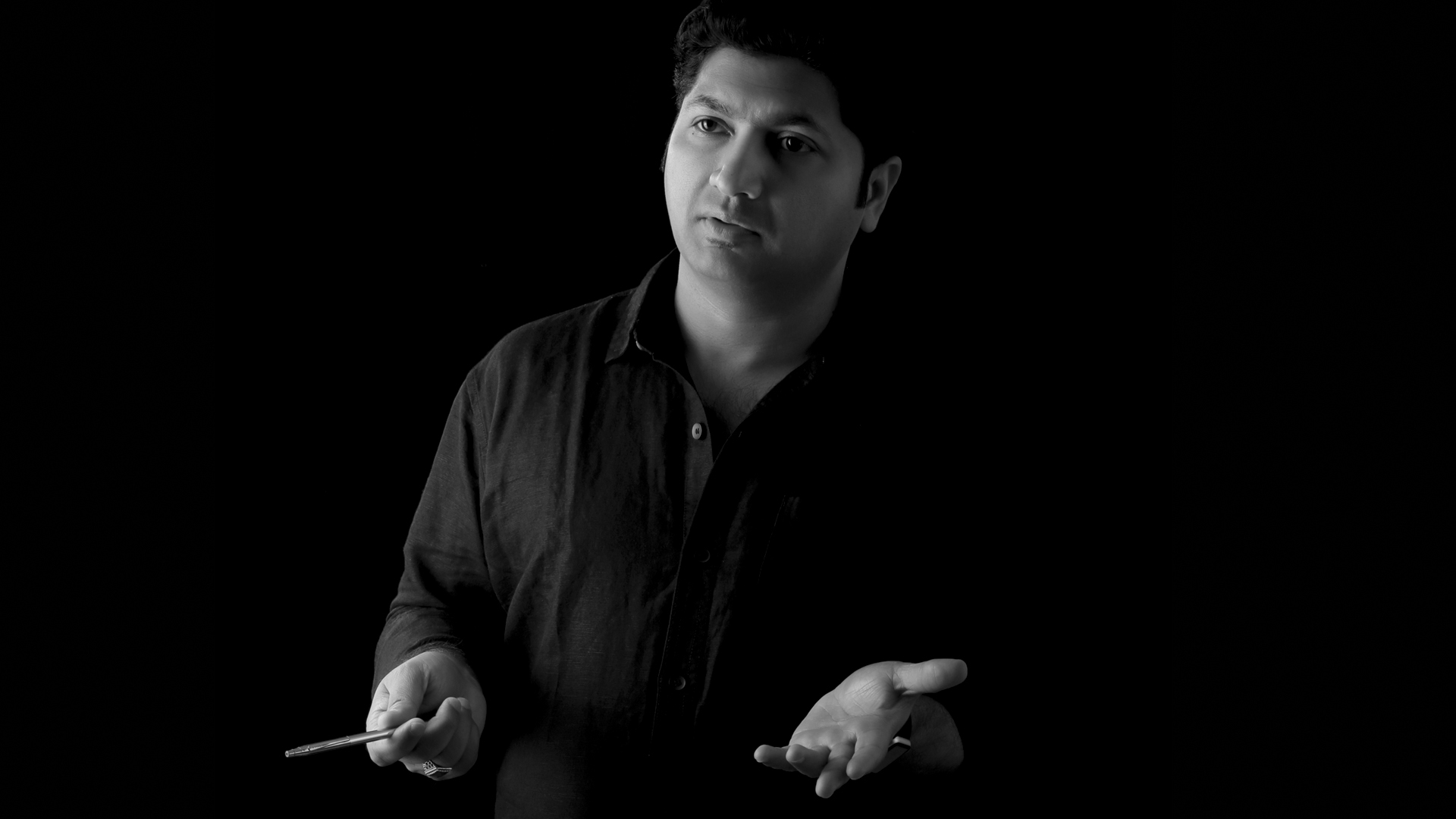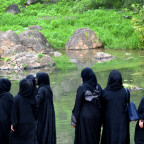
Discover the power of collective action and unity in the Khilafat Movement, as Mujeeb Jaihoon explores its history and enduring relevance.
Introduction
During the sixteenth century, a western critic once stated that if a visitor from Mars were to arrive on earth, they would probably conclude that the world was about to become Muslim. This would not only be the opinion of a Martian visitor, but of any visitor, given the presence of the Mughal Empire in the Indian Subcontinent in the East, the Safavid Empire in the center, and the Ottoman Empire in the West. These empires enjoyed glory, power, and prosperity.
Like all great empires, the Ottomans fought many battles in the eighteenth century. Being a large empire, they had as many friends as they had enemies. Countries like Poland, Russia, and Austria, whose territories bordered the Ottomans, had constant tensions with them. The empire also had vast resources that remained unexplored. As a result, Czar Nicholas I of Russia christened Turkey as “the sick man of Europe”.
Everyone waited for an opportunity to slice up this last remaining political institution in the Islamic world. They eagerly anticipated the funeral of the last great empire in the East.
What is a Khalifa?
Shah Waliyullah Dehlavi, a great sociologist, thinker, and saint of Delhi, writes in “Izalat al Khafa” that “Khalifa” is the leadership of people united in a commonwealth which comes into existence for the establishment of religion. It includes revival of religious branches of learning, institution of Islamic ritual observances, organization of jihad, marshaling an army, remunerating the combatants, creating a judicial system, and enforcing the laws, curbing of crimes. All these functions must be performed by it as if it were deputizing and representing the Prophet.
In Arabic, “Khalifa” means successor and representative. In the Holy Quran, God has addressed mankind as his representative on earth.
Objective
The objective is to create a new type of relationship between the Creator and the creature and transform this bond into the life of the people to build a healthy social structure. Such a social setup requires a God-given law and a human caliph to actualize the Divine Will.
Concern of Muslims in the fall of the earlier Caliphate.
Syed Abul Hasan Ali Nadwi writes that in earlier days, the community had great regard for the Caliph and the office he held. When Caliph Musta’asim Billah died, the Muslims of the locality were greatly grieved. So much so that Sa’adi of Shiraz composed an elegy in his memory.
“It has seen the kingdom of Musta’asim crushed,
The heavens would better shed tears of blood.”
Status of Caliph in Islam
In an essay published in the Sociological Review of London in 1908, Dr. Mohammed Iqbal, the Poet Philosopher of Islam, has given an analytical review of the Caliphate system in Islam. A Caliph does not enjoy any place in front of the law. He is like any other citizen of the state. When sued in a court of law, he must appear in person. When the second Caliph of Islam was accused of misuse of his powers, he appeared in person to justify his stand.
The election of the Caliph
If the son can succeed his father, he may become the Caliph. But such an appointment is not valid until the community accepts it. Of the 14 Umayyad Caliphs, only four of them successfully appointed their sons as successors. The citizens have the right to topple a Caliph if he becomes physically or mentally unfit. Scholars have debated the possibility of dual or multiple Caliphates in the world of Islam. Ibn Khaldun, the celebrated Arab sociologist and political thinker, has positively supported it (Ibid).
The state
The concept of the state in Islam is much different from that of Europe, which believes in the segregation of Religion and state. The state, from the Islamic standpoint, “is an endeavor to transform” the principles of equality, solidarity, and freedom into “space-time forces.” It is in this sense alone that the state in Islam is a theocracy, not in the sense that it is headed by a representative of God (Reconstruction, pg. 154).
The Ataturk revolution was a mere reflection of the worn-out political ideology of Europe and, as such, was nothing new.
Ottoman origins
In 830-850, Turkish mercenaries from Central Asia found in the service of Abbasid caliphs. They were exposed to Persian Islamic culture. The term “sultan” (Arabic abstract noun meaning “sovereign authority”) begins to be used to designate rulers. In 1055, Seljuk sultans become rulers in Abbasid Baghdad; two centuries of turmoil are ended and unity is restored in the eastern Islamic region. Turkish-speaking Muslims raid and settle in the area now known as Turkey. In 1092, the death of Seljuk Sultan Malik Shah and his great vizier, Nizam al-Mulk comes into power. In 1258, the Mongols conquer Baghdad and bring the Abbasid Caliphate to an end.
In the later 13th century, Turkish Anatolia fragmented as Mongol control weakens and is withdrawn; many small principalities emerge, one of them led by Osman (Turkish form of the Arabic/Muslim name; the European corruption of Osman is Ottoman). He established the Ottoman Empire.
Millet System
The Ottoman Empire has a rich history dating back to the 9th century when Turkish mercenaries from Central Asia served under the Abbasid caliphs and were exposed to Persian Islamic culture. During this period, the term “sultan,” which means “sovereign authority,” began to be used to designate rulers.
In 1055, Seljuk sultans became rulers in Abbasid Baghdad, ending two centuries of turmoil and restoring unity in the eastern Islamic region. Turkish-speaking Muslims raided and settled in the area now known as Turkey. After the death of Seljuk Sultan Malik Shah in 1092, his great vizier, Nizam al-Mulk, came into power. However, in 1258, the Mongols conquered Baghdad and brought the Abbasid Caliphate to an end.
In the late 13th century, Turkish Anatolia fragmented as Mongol control weakened and was withdrawn, resulting in the emergence of many small principalities, one of them led by Osman, who established the Ottoman Empire.
The Ottoman Empire was expansionary in nature and employed the millet system, which granted non-Muslim subjects a considerable degree of autonomy. They were divided into religious communities called millets and placed under the direct authority of the leading church official.
Like any empire, the Ottoman Empire saw a decline following its days of glory. This transformation did not happen suddenly, but rather over years or even centuries. Historians note that civilizations were destroyed not by external forces but due to internal conflicts, and the Ottoman Empire was no exception.
After Suleiman the Magnificent, there were few men of the same ability, training, or experience, and some were incompetent, even mentally defective. Many were minors under the influence of the Queen Mother. For several decades in the first half of the 17th century, women of the palace exercised such influence that the period is called “The Sultanate of the Women.” Unfortunately, in this state, the spell of doom was bound to happen.
Bribery, purchase of office, favoritism, and nepotism became increasingly common, and corruption spread to the provinces. Officials would buy their offices and then squeeze more taxes from the populace to reimburse themselves.
Provincial Janissaries sometimes acted as semi-autonomous local rulers, while in Istanbul, they became a disruptive force, often collaborating with others. This was like an Ottoman reflection of the European feudal system.
Taxes were imposed on the peasants to raise funds for the military, which was responsible in part for revolts in Anatolia, the abandonment of farmlands, and the depopulation of villages. Consequently, the empire experienced a decline in tax revenues despite higher taxes.
Economics
The role of economics in the downfall of the Ottoman Empire was crucial. The introduction of new currency forms exacerbated corruption.
As the Europeans established control over new sea trade routes, they no longer needed to pass through Ottoman lands. Asian spices were shipped directly to Europe, while European goods continued to flow into the Ottoman Empire, negatively impacting local industries. The Ottoman Empire’s unfavorable trade balance resulted in a gold outflow, while European states demanded more favorable trade treaties.
Provincial rulers became increasingly powerful, ignoring orders from the capital.
Other factors
The Ottomans were slow to keep up with the scientific developments of the Renaissance in Europe. The West made progress in agriculture, technology, and industry.
Strong, centralized national monarchies or bureaucratic empires emerged not only in Western Europe but also along the Ottoman frontiers in Central and Eastern Europe.
Nationalism was growing worldwide, and every province began to think of itself as a separate nation. Arabia sought independence, and many other states, such as Egypt, also revolted.
In 1908, a movement called the Young Turks arose in Turkey against the rule of Abdul Hamid. They advocated limiting the power of the monarch and reviving the constitution. Another group, the Committee of Union and Progress, acted as a secret protest society.
The CUP gained influence in the Turkish government after Abdul Hamid was deposed. They sought to establish Ottomanism as the identity of Turkey.
The final blow to Ottoman glory was their entry into World War I and siding with the Germans. The victorious powers, Russia, Britain, and France divided the once-great empire among themselves.
The Indian reaction to the Ottoman Decline
While the Ottoman Empire was disintegrating, there were attempts at rejuvenation within the empire. The entire Muslim world mourned the fall of the Ottoman Empire, but a more reactionary response emerged from the Indian subcontinent.
Maulana Muhammad Ali Jawhar, a renowned Indian freedom fighter and anti-British advocate, had just returned from Britain after graduating from Lincoln College. In 1914, he wrote the thirty-six-hour sitting editorial “The Choice of Turks” in response to an article in The London Times.
During the Balkan Wars in 1912, he appealed for aid for Turkish victims and sent a medical mission. In 1919, he joined the Khilafat movement and the Indian National Congress, which added to the popularity of the anti-British sentiment.
Although Maulana’s efforts were concentrated in Northern India, the Khilafat movement gained more significant traction in the south, particularly in Kerala. It is foolish to assume that the Khilafat Movement was the aspiration of a single community in India. No other struggle after the 1857 War of Independence cost as many human lives as the Khilafat movement.
The Khilafat Movement was a significant event in India’s history, aiming to restore the Caliphate in Turkey and protest the misdeeds of the British imperial forces during World War I. The movement included leaders from various religious, political, and social backgrounds, including religious scholars, lawyers, religious heads, and politicians from different creeds. Stalwarts like Muhammad Abdur Rahman Sahib, Muhammad Musliyar, K. Madhavan Nair, K.P. Keshava Menon, KM Maulavi Sahib, MP Narayana Menon, and Brahmadathan Namboodiripad were among the movement’s leaders.
It is a misconception to think that the Khilafat Movement was the aspiration of a single community in India. The movement helped strengthen India’s own freedom struggle by drawing in more crowds. British spoon-fed historians have misinterpreted the Khilafat as a movement of a particular community. However, the movement serves as a reminder of the power of unity and collective action in achieving a common goal.
During the movement, leaders like Ali Musliyar and Kunhammad Haji established a short-lived Caliphate in Malabar and fought ceaselessly against the Imperial power. Even the ladies contributed to the movement by parting with their valuables to aid the broken empire. Muhammad Ali Jawhar appealed for funds and traveled to Europe to gather support for the Khilafat. He fought with his tongue and pen for the restoration of the Caliphate until his death in 1931. He was buried near Al Aqsa Mosque in Jerusalem.
In conclusion, the Khilafat Movement was a united effort by leaders of different backgrounds who shared a common goal. It was not the aspiration of a particular community but a reaction to the misdeeds of the Imperial forces. The movement’s leaders fought for justice, truth, and courage, which continue to inspire people today. The Khilafat Movement remains a crucial chapter in India’s history, reminding us of the power of collective action and unity in achieving a common goal.
2001, Sharjah.



